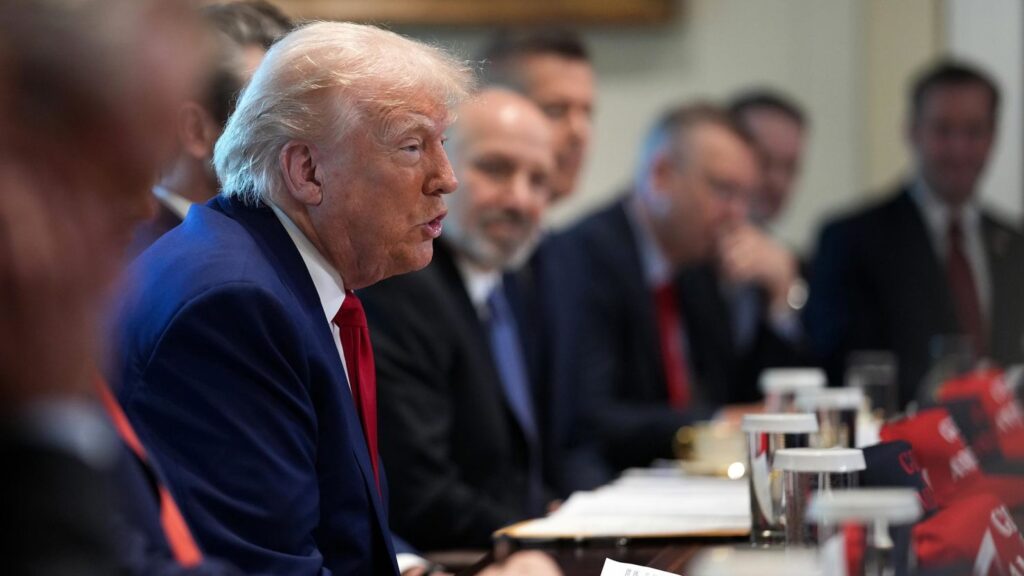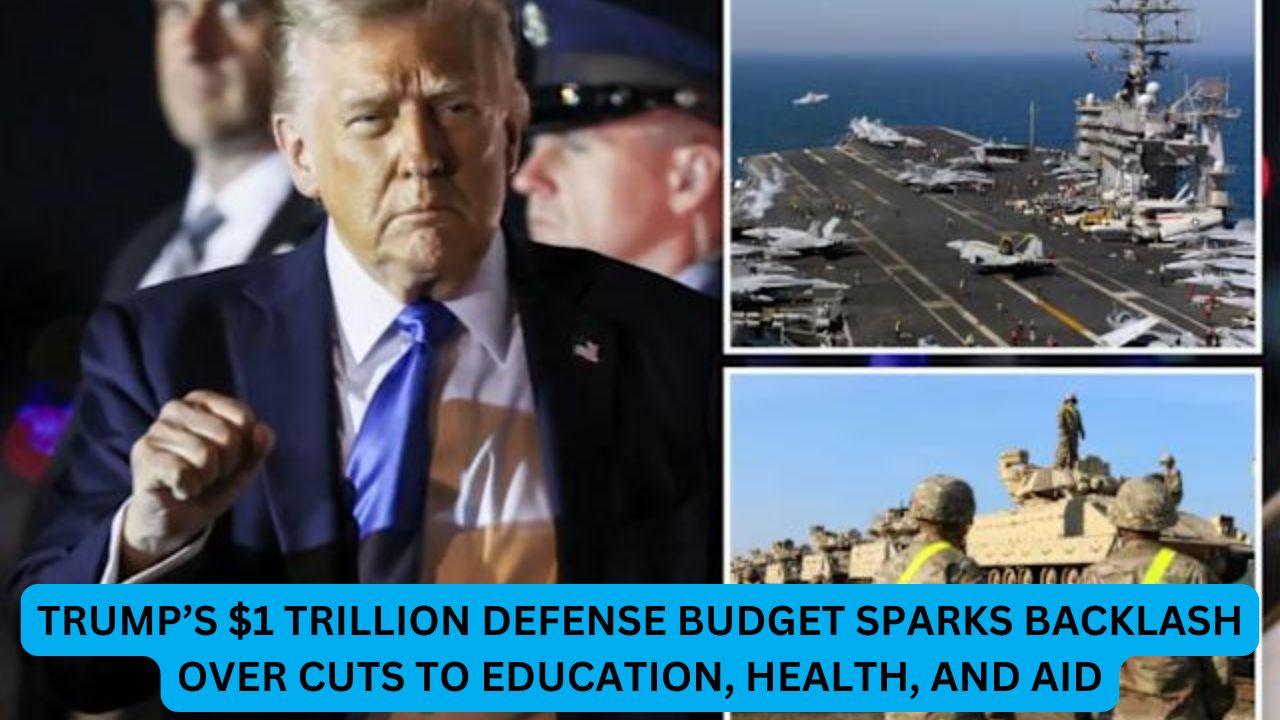President Donald Trump has unveiled his administration’s fiscal year 2026 federal budget proposal, signaling a dramatic shift in national priorities with over $1 trillion allocated for defense while slashing critical domestic programs in education, health, environmental protection, and foreign aid.
The proposal, released on May 2, 2025, has already stirred sharp debate in Congress, with Republicans largely praising the plan’s focus on national security and critics warning of its consequences for millions of Americans.
Defense and Homeland Security at the Forefront
Under the proposed plan, defense spending would surpass $1 trillion, marking a 13% year-over-year increase. Major initiatives include:
- Modernization of the U.S. nuclear arsenal
- Development of the F-47 Next Generation aircraft
- Expansion of missile defense systems
- Strengthening of cyber and space security programs
The Department of Homeland Security would also receive a boost of $175 billion, with $43.8 billion dedicated to border security, including deportation enforcement and the completion of the border wall—both key Trump campaign promises.
For more on federal budget details, visit the Office of Management and Budget (OMB) and Department of Defense.
Drastic Cuts to Domestic Programs
To fund this massive defense push, the Trump budget proposes slashing non-defense discretionary spending by $163 billion, a 22.6% cut. The hardest-hit areas include:
Education
- Reduction in federal funding for public education, especially K-12 programs
- Elimination of teacher training grants and some student financial aid programs
- Critics say this will disproportionately impact low-income and minority students
Health and Human Services
- Proposed $18 billion cut to the National Institutes of Health (NIH)
- Cuts to the Centers for Disease Control and Prevention (CDC)
- Reduced funding for public health programs, including pandemic preparedness
See current programs affected at U.S. Department of Health & Human Services.

Environmental Protection
- A 31% funding cut for the Environmental Protection Agency (EPA)
- Elimination of climate change-related research and initiatives
- Restrictions on emissions regulations and green energy development
Details can be reviewed on the EPA website.
Foreign Aid and Diplomacy
- The State Department faces $50 billion in cuts
- Proposed merger of the U.S. Agency for International Development (USAID) with the State Department
- Most foreign development and humanitarian programs would be downsized or defunded
For international aid figures, visit USAID and the U.S. Department of State.
Public Assistance Programs
- Defunding of the Low-Income Home Energy Assistance Program (LIHEAP)
- Cuts to public housing programs
- Elimination of support for arts, public broadcasting, and nonprofit grants
Political Response: Praise and Pushback
Republican Endorsement
House Speaker Mike Johnson hailed the budget as a “return to American values,” applauding the elimination of “woke” education and climate programs. He emphasized efficiency and defense as key pillars.
Criticism from Both Sides
Even some Republican lawmakers voiced concern. Senator Roger Wicker, Chair of the Armed Services Committee, argued the plan actually understates defense needs. Senate Minority Leader Mitch McConnell questioned the “creative accounting” behind the proposal’s defense figures.
Democrats, meanwhile, condemned the budget for undermining public welfare in favor of tax cuts for the wealthy and higher tariffs that could hit working families.
Fiscal Impact and Public Debate
Trump’s budget aims to eliminate funding for the Corporation for Public Broadcasting, affecting both PBS and NPR, and would phase out several domestic entitlement programs unless restructured.
Economists warn that while the budget may reduce some discretionary spending, the increase in military spending and tariffs could lead to higher costs for middle-class Americans without significantly lowering the deficit.
Conclusion
President Trump’s 2026 budget reflects a stark realignment of federal priorities, prioritizing military strength and border security while significantly reducing support for public services and global engagement. Whether Congress adopts the budget in its current form remains uncertain, but the proposal has ignited a broader national debate over what America values most in its spending.
Authoritative External Sources
- U.S. Department of Defense
- U.S. Department of Education
- U.S. Department of Health & Human Services
- U.S. Environmental Protection Agency
- U.S. Department of State
- USAID
This article has been carefully fact-checked by our editorial team to ensure accuracy and eliminate any misleading information. We are committed to maintaining the highest standards of integrity in our content.

Outside of work, he enjoys playing chess, following cricket, and writing short stories. His commitment to integrity and in-depth analysis strengthens OTE News’ mission of providing trustworthy journalism.




